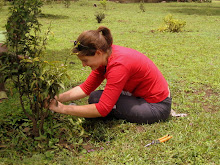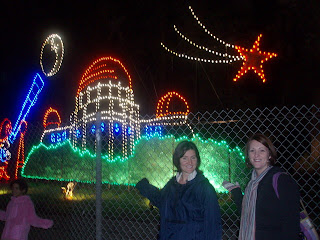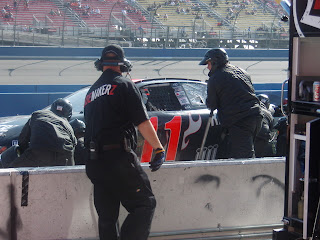Global Pentecostalism by Donald E. Miller and Tetsunao Yamamori
"Religion is a rather earthy phenomenon that is mixed up with escapism, cultural baggage, and fraud. This observation is not new; it is what the prophets of the Hebrew scriptures and all of the great religious traditions have denounced. But there is another side to Pentecostalism that marches to a different drummer...."(p. 224).
This book is basically a global overview of the movements and social action taking place within Pentecostalism. The book questions whether Pentecostalism, in all its diverse forms, can make an impact on the major issues in our world, particularly in the developing world. The researchers also investigated the influence of church plants created by outside missionaries, as well as the impact of liberation theology on the current trends within the Pentecostal church.
Ch. 1 Global Pentecostalism
The major growth within the Pentecostal church is happening in the global south, and therefore Christianity is being reshaped by very contrasting cultures.
Three common misconceptions about Pentecostalism are dispelled:
- Speaking in tongues, being slain in the Spirit, prophecying, etc. are not all demonstrated in every Pentecostal services
- Pentecostals are not comprised of lower-class, marginalized, or uneducated people
- Because Pentecostals are believed to be fixated on the afterlife, they give no consideration to redeeming this earth
There are legitimate arguments for where these stereotypes originated, but this movement has evolved and grown out of that narrow point of view.
A primary focus of Pentecostalism is worship, and the heart of it is through music.
The movement was in part a reaction to the Enlightenment, which said that through reason and science everything can be explained, squelching the role of the Holy Spirit. Pentecostalism focuses on the spiritual realm, and this resonates with many non-western societies whose traditions are rooted in animism.
Three means that the Pentecostal faith can potentially lead social transformation include:
- Through encouragement and offering people hope in eternal life, free from poverty and oppression.
- Through improving social welfare, largely due to their stance against alcohol, drinking, drugs, gambling and womanizing.
- Through focusing on human rights. They practice equal leadership opportunities for all people to have a role and proclaim that we all have direct access to God.
Ch. 2 Progressive Pentecostals
This chapter describes some of the work being done around the world and the profound impact it's having. For example, in Ethiopia, a local doctor has opened a clinic, training "health evangelists" to do home visits with parents to encourage a more healthy and sanitary living environment. This has, in turn, helped the community serve one another by working together to collectively solve their problems. It moves beyond simply charity to create a community development program.
Pentecostals such as this doctor believe that it is impossible to separate their Christian faith and commitment from their community involvement. Florence, the Doctor, said, "It is through poor and disenfranchised people that we encounter Jesus" (p. 40).
One pastor commented that they feed the hungry in order to share the gospel with them. There is a belief that in order to escape poverty, one must have a strong faith in Christ (prosperity gospel). There is also a consciousness of not wanting to create dependency, but wanting to empower people through economic opportunities, all the while being sensitive to local needs and political structures.
The types of programs they encountered included: emergency relief, education, counseling, mercy ministries, medical assistance, economic development, the arts, and policy change. The researchers concluded that all these initiatives seemed to flow naturally out of their sincere commitment to carrying out an incarnational ministry. Their mission is to view human lives holistically, recognizing both the physical and spiritual needs.
Ch. 3 Building a New Generation
This chapter looks at the various programs focused on children and youth, such as children's homes in Uganda for orphans, camp programs, schools, vocational training, rescuing street children and trafficked children.
Children are encouraged and trained in the arts to hold dramas in churches and play music for worship, which builds their self-esteem.
Women are also served through some of these initiatives because they are given key roles in serving, thus empowering them as community builders.
While many of the programs reach out to individuals, the intention is that it will impact the larger community. The overarching belief is that children have rights and should be treated with dignity, and that the church has a responsibility to create a safe environment to allow them to flourish.
Ch. 4 Practicing the Faith
In order to further transform individuals and society into faithful followers of Christ, ministries such as drug rehabilitation centers are organized. Teen Challenge is one of the largest of its kind, with a strong charismatic influence. There are also prison ministies, mental health services, caring for people with HIV/AIDS, and ministering to sex workers.
The goal with all these programs is not charity, but rather to prepare individuals to be contributing members of society. They help with vocational training and microfinance assistance to encourage people to start businesses.
In addition, effort is made to encourage political involvement. While Pentecostal churches are generally known for seeing politics as corrupt and not having a lot of direct involvement, there are still some more progressive leaders who try to foster engagement and dedication to improving conditions for the poor through politics.
This book seeks to highlight the emergence of a new group of Pentecostals who still recognize the vital role of the Holy Spirit, but also seek to engage the world around them. They recognize the teachings and life of Christ as seeking justice for the poor, prostitutes and children.
Ch. 5 Encounters with the Holy
In looking at the worship traditions of Pentecostals, it is highly participative. People attending are fully involved and there is a particular emphasis on touch, as people lay hands on one another and share the kiss of peace. Music is integral. The worship experience is centered around corporal singing and music. The typical flow follows a general pattern: 1) upbeat, energetic songs, 2) contemplative songs, 3) pray, maybe some speaking in tongues, 4) offering of scripture, sermon, invitation for healing, and 5) celebratory praise. Dance is another common element of worship.
Prayer are more simplistic and personal than the traditional scripted prayers of Catholics and other Protestant denominations. However, it said that sometimes people will get lost in their prayer, gradually falling into a sermon with their eyes closed.
Gifts of the Spirit, such as speaking in tongues, healing, prophecy, and being slain in the Spirit are all common elements of Pentecostal worship. As mentioned before, these are all very cultural accepted practices for many non-western cultures. Western modern worldview often dismisses the presence of the spiritual realm - demons, spirits, etc.
Some churches have multiple services and the music worship style is altered for a certain demographic attending the service. (So this is not just a western phenomenon, or was it transported?)
It was addressed in this chapter that Pentecostalism should not be viewed as a reversion to primitivism, but instead it is "ironically postmodern rather than primitive. It encourages people to merge mind and body into a unified expression that honors emotional and physical expressions as integral elements of worship" (p. 142).
The building structure of Pentecostal churches comes in many shapes and sizes, from multi-million dollar facilities, to simple shacks.
"It is the divine-human encounter that empowers people to help their immediate neighbor, as well as engage in various community building activities (p. 132).
The large emphasis is made on displaying unconditional love to all people.
Ch. 6 Born in the Image of God
This chapter addresses the interaction of religion and economics.
The Pentecostal ethic aligns most closely with the Protestant ethic, fostering an honest, disciplined, transparent work ethic, viewing their vocationo as a calling by God that they must remain committed to. However, one step further, Pentecostals are strongly encouraged, as a new creature in Christ, to refrain from "pleasures of the flesh." Therefore, they have more money to invest in education, business, or other family/friends.
There is a strong belief in the blessings one receives from tithing. Several testimonies were shared from individuals from India and Kenya who were successful in business, which they attributed to tithing.
The Pentecostal tradition really emphasizes the dignity and worth of each individual, as a child of God. Their core value proclaims the priesthood of all. They were one of the first to give equal rights to women in ministry.
The church's vast services help members get a bit of an advantage in competing for business opportunities and jobs. The researchers recognized a correlation between Pentecostalism and capitalism, as many converts demonstrated upward social mobility.

 But now the incredibly busy quarter is over and everyone is filled with renewed optimism that the next one can't be nearly as bad. I've already made lots of new years resolutions - to go to the gym, journal more regularly, spend quality time with people, spend quality time with God, start planning my overseas practicum (potentially for this summer), etc. etc. All it takes is a little discipline. All I need is a disciplinarian to reprimand me when I drop the ball. That's all.
But now the incredibly busy quarter is over and everyone is filled with renewed optimism that the next one can't be nearly as bad. I've already made lots of new years resolutions - to go to the gym, journal more regularly, spend quality time with people, spend quality time with God, start planning my overseas practicum (potentially for this summer), etc. etc. All it takes is a little discipline. All I need is a disciplinarian to reprimand me when I drop the ball. That's all.


































